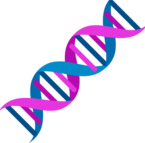Antioxidant Strength by ORAC: various foods
One of the popular measures used to compare superfoods is the ORAC (Oxygen radical absorbance capacity) scale. The USDA released a paper last year, Oxygen Radical Absorbance Capacity(ORAC) of Selected Foods – 2007, which detailed the ORAC and total phenolics. They state, "The ORAC assay is considered by some to be a preferable method because of its biological relevance to the in vivo antioxidant efficacy...". I took the data from the study, and created this graph. It shows the total ORAC for all the foods in the study. I have additionally added a few data points for pomegranate fruit (105 micromoles per TE/gram), acai berry fruit (167 micromoles per TE/gram), and freeze dried acai powder (500-1067 micromoles per TE/gram). Note that typical commercial acai freeze dried powder is around 500 micromoles per TE/gram.
One recommendation from 1999 is to intake 3000-5000 ORAC units per day. Since then, the ORAC method has been improved since 1999, the numbers have increased substantially. According to Dr. Prior (one of the authors, in private correspondence) the numbers have approximately doubled. All the data on the graph below is based on the new ORAC method. More recent guidelines from Dr. Prior and colleagues is to ingest ORAC units roughly equal to 4.61*Calorie consumption per day(Plasma Antioxidant Capacity Changes Following a Meal as a Measure of the Ability of a Food to Alter In Vivo Antioxidant Status, Ronald L. Prior, Phd, et. al., Journal of the American College of Nutrition, Vol. 26, No. 2, 170–181 (2007)). This means, for instance for a 2500 calorie a day diet, 11500 ORAC (in micromoles TE equivalent/gram) would be required to restore antioxidant capacity. These are very rough numbers, but should give you an idea. Note that the report reported results in millimole TE equivalent per gram, but I converted to fit the format of this article.
To understand how much of a specific food or foods you would need to eat to achieve this, take the number of ORAC units per day you desire (say 10000) and divide by the score of the food or foods. For instance, with bananas, having an ORAC of 8.79, you would need to eat 10000/8.79 = 1137 grams (about 2.5 pounds of bananas). Note one pound = 453.6 grams. Keep in mind that we do not need to stop once we meet the minimum. Thre are many other nutrients we need besides antioxidants. The table below gives some examples.
Amount of Given Food Needed to Achieve 10000 ORAC Units
| Food | ORAC | Grams | pounds | Comments |
| Bananas | 8.79 | 1137 | 2.5 | almost 10 med. bananas |
| Radishes(raw) | 17.36 | 576 | 1.27 | about 128 med. radishes |
| Red Wine (Cab) | 50.34 | 199 | .44 | 5 oz. wine |
| Pomegranate fruit | 105 | 95.2 | .21 | 1 pomegranate contains about 1.6 servings (varies) |
| Acai Fruit | 167 | 60 | .13 | Note: Acai Bowl mixture contains less than the whole pulp (similar to MonaVie) |
| Pecans | 179.4 | 55.7 | .12 | easy |
| Dark chocolate | 208.23 | 48.0 | .11 | It is hard to eat so little! |
| Curry Powder | 675.3 | 14.8 | .03 | sprinkle it on |
| Freeze Dried Acai | 500-1027 | 9.7-20 | .021-.044 | Think supplements; 500 commercial typical |
| Cloves | 3144.5 | 3.2 | .007 | this is 38-50 cloves |
A note on discrepancies: This USDA study references pomegranate juice, and states a value of 2341 micromoles TE per 100 grams, which I converted to 23.41 micromomoles TE/gram. The USDA study references unpublished data from Welch's as the source. A study at Brunswick Labs, which I cannot find but is referenecd extensively on the internet claims 105 micromol TE/gram, usually for fruit and/or juice. A study by Seeram, et. al., "Comparison of Antioxidant Potency of Commonly Consumed Polyphenol-Rich Beverages in the United States" indicates a value of 25 micromoles TE/ml (taken to be about 1 g)for POM Wonderful pomegranate juice, which is consistent with the Welch's data. I suspect the 105 micromoles TE/gram is for the edible portion of the fruit. The Seeram report indicates a range of values of 16-23 micromoles TE/gram for acai juice. We need to keep in mind that juices have high water content, and a lack of skin and other solids. The freeze dried powder of the fruit maintains the potency best because it cotains the entire fruit (pulp and skin), and it removes most of the water, which results in reducing or even stopping the chemical reactions which can reduce the potency once the fruit is removed from the plant. Also it does not requier thermal processing, which reduces the potency.


